Softbank Group Q2 profit blows past expectations; sells Nvidia stake for $5.8 bln
The stock market declined today by approximately 25 basis points, coinciding with a rise in rates on the 5-year and 10-year Treasuries to their highest levels since 2007. Ahead of the Fed meeting, the bond market is signaling that rates will likely remain high for an extended period.
This is further evidenced by the Fed Fund Futures, which suggest that rates are expected to stay above 4% through 2028. I anticipate that tomorrow’s dot plots will echo a similar sentiment.
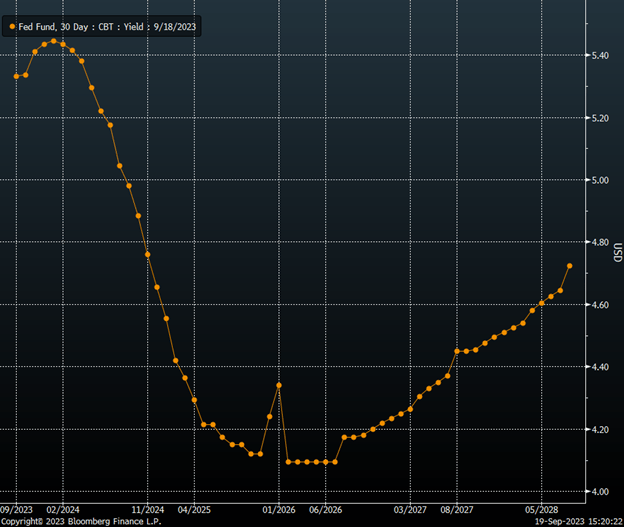
Fed Fund futures for December 2024 and 2025 show rates of 4.7% and 4.24%, respectively, which are up massively over the past couple of months. I would expect the Summary of Economic Projections tomorrow to reflect 2024 and 2025 Fed Funds rate similar to those value, if not even slightly higher.
Meanwhile, just about the entire real yield curve is above 2% out to 30-years, and if we assume a targetted inflation rate of 2%, then it would imply that nominal rates stay around 4% for a very long time.
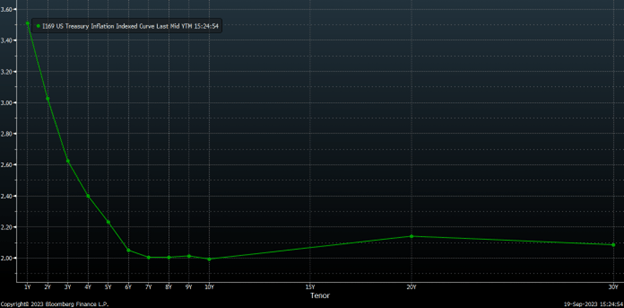
However, the narrow spread between the Nasdaq 100 earnings yield and the 10-year real yield indicates that the equity market is not expecting the Federal Reserve to maintain high interest rates for an extended period. Rather, it suggests that the market anticipates the Fed will move to cut rates aggressively in the near future.
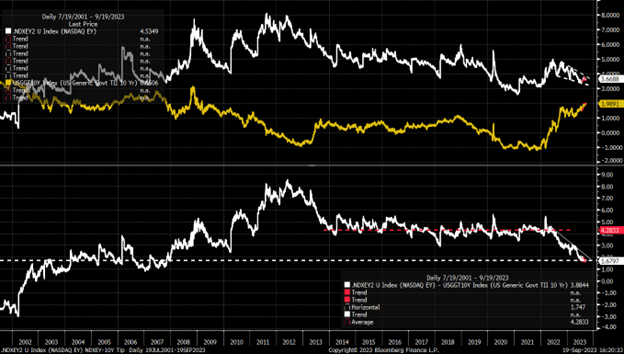
This implies that the spread between the Nasdaq 100 earnings yield and the 10-year TIP (Treasury Inflation-Protected Securities) must widen. For this to happen, the Nasdaq 100 earnings yield must begin to rise in parallel with both nominal and real yields.
Additionally, we’ve observed that since the end of July, the Nasdaq 100 earnings yield has been increasing alongside the 10-year TIP. Additionally, it appears the Nasdaq earning yield may be breaking out of a bull pennant, suggesting that the earnings yield of the Nasdaq 100 may continue to rise further, along with the 10-year real yield.
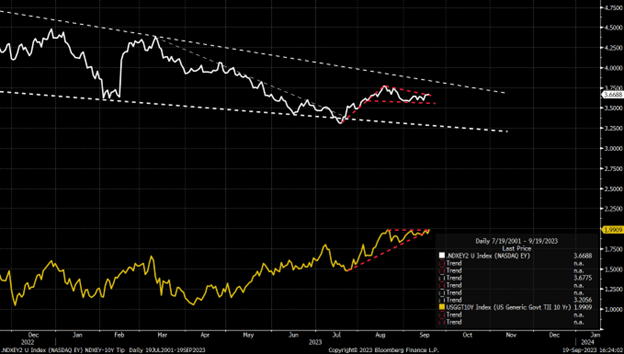
S&P 500 to Return Below 4,200?
Today, the S&P 500 declined to a support level of around 4,420, which led to a bounce in the index. The “put wall” for the S&P 500 is also situated at 4,400, providing additional support. For the S&P 500 to break lower, as I anticipate, we would need to see the put wall start to move downward. Nevertheless, I still believe that a diamond reversal pattern has formed, which likely indicates a return to levels below 4,200.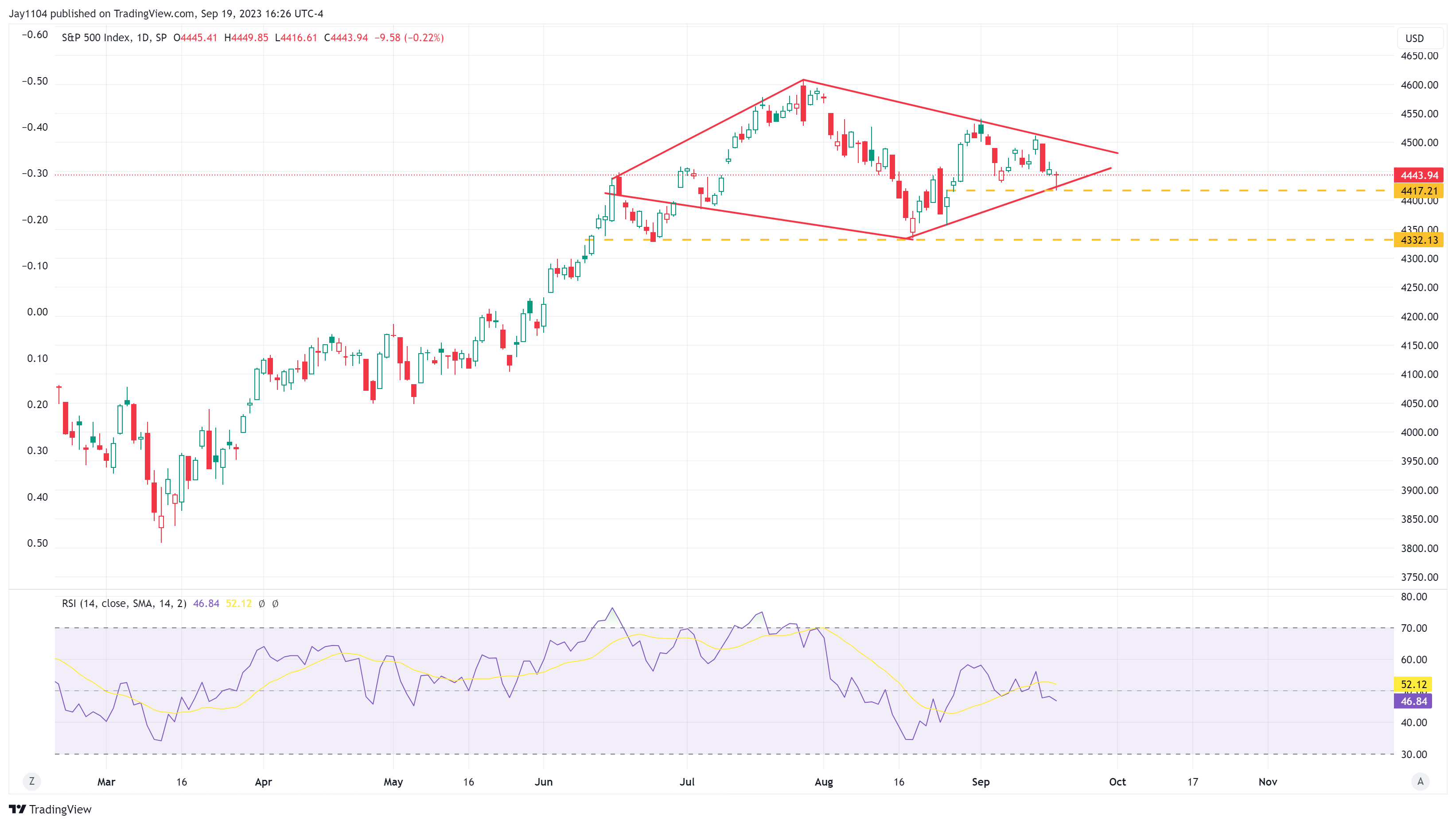
Oil Prices to Take a Breather
Oil prices surged into the resistance zone between $92 and $93 before experiencing a sharp reversal. This zone represents significant resistance, and a move above this level could lead to a sharp increase in oil prices back towards $97. However, given oil’s recent strong performance, it wouldn’t be surprising to see it plateau or pause at these levels.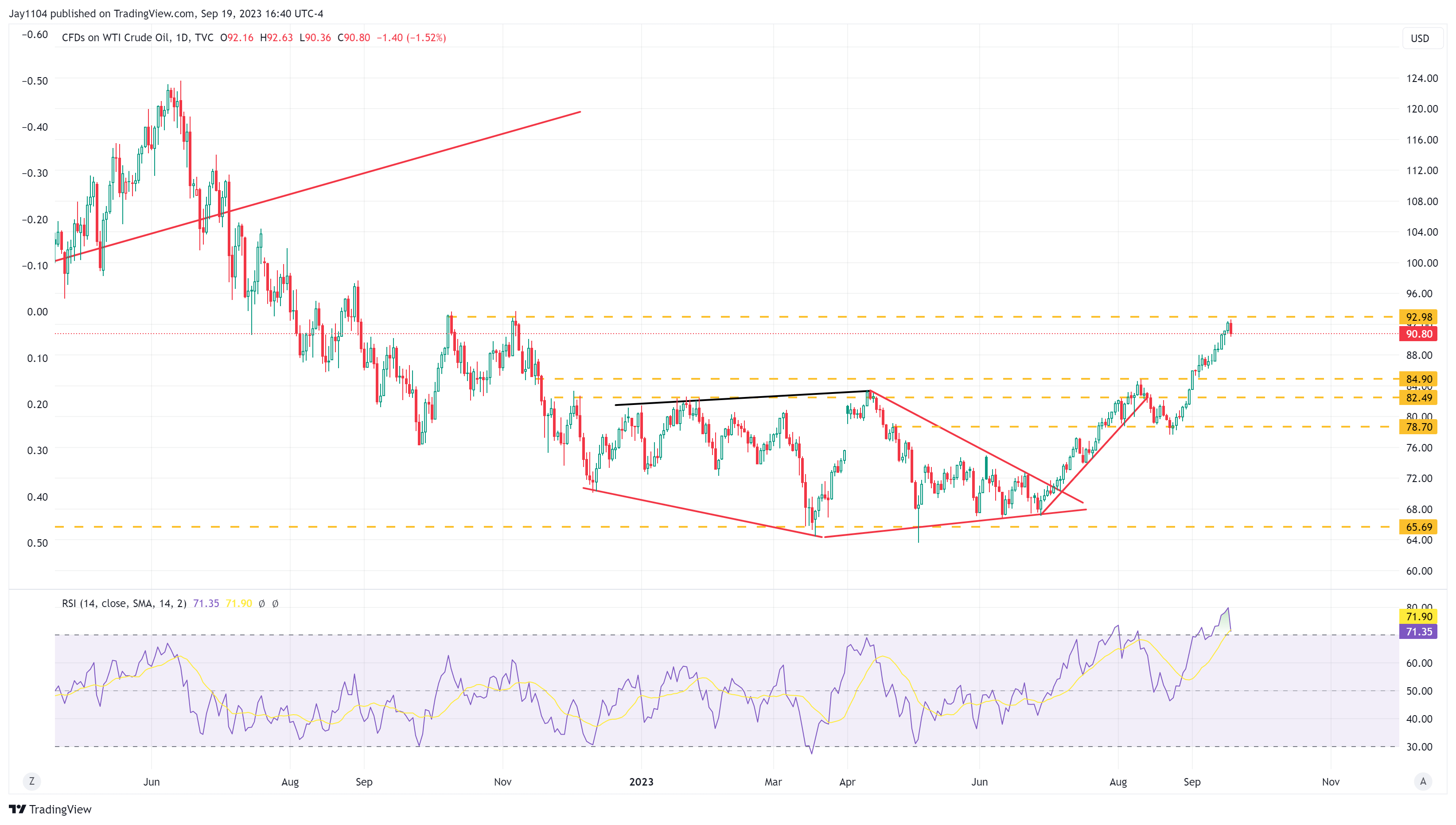
US 10-Year Rate Could Continue Climbing
Additionally, today the 10-year rate broke above a resistance level, closing at its highest point since 2007 at 4.37%. At this juncture, a further climb seems plausible, perhaps even to 4.7% over time, particularly if the bond market continues to entertain the idea of a sustained 4% nominal rate.
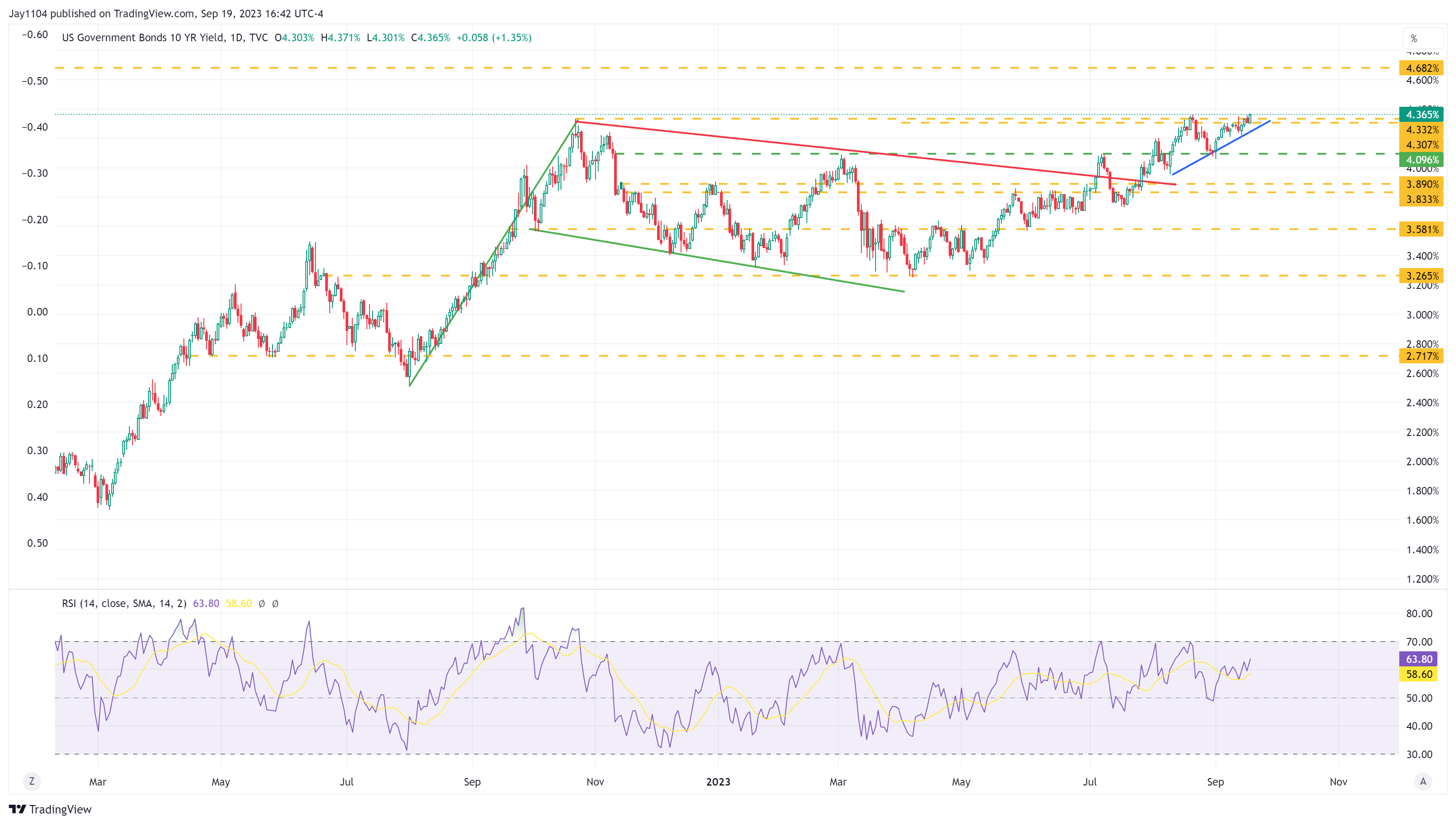
Corporate Bonds Consolidate: What's Next?
Meanwhile, the HYG has been in a consolidation phase for several months, and it appears that this phase is nearing its conclusion. Recently, I’ve observed some bearish options activity in the HYG. This suggests that if the consolidation resolves to the downside, we could see widening credit spreads.
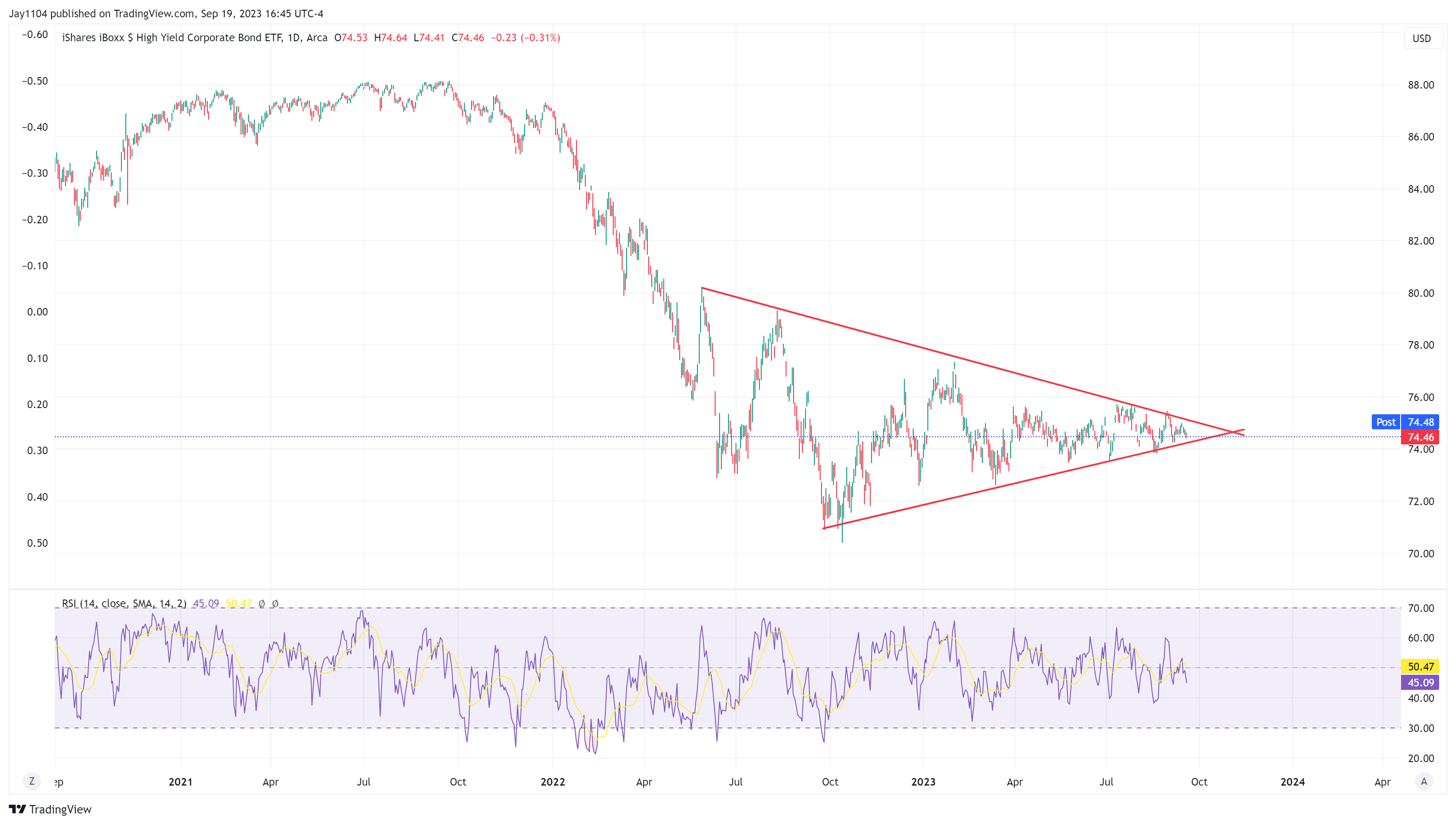
ARM Stock's Breakdown Is a Key Sentiment Indicator
Finally, Arm Holdings (Nasdaq:ARM), which went public last week and was priced at $51, has seen a sharp decline in its stock price over the past few days. Currently trading at $55, down significantly from its high of $69, this could serve as a significant sentiment indicator.
If the stock breaks below its IPO price of $51, it would strongly indicate that the deal was overpriced. This could lead to further declines if investors losing money from the offering decide to exit their positions, making $51 very important to watch.
